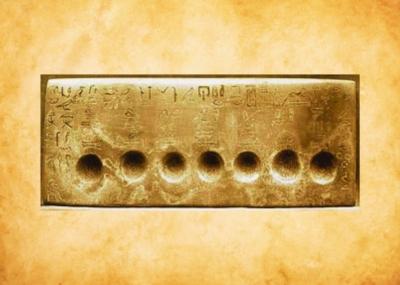Aromatherapy is now one of the most popular and effective forms of complementary medicine. The positive effects of aromatherapy are finally being proven through clinical research in laboratories around the world, despite the fact that the usefulness of these little oils has been empirical knowledge for thousands of years (5).

The oldest written records Early in Ancient Mesopotamia’s history (mid-fourth millennium BC), cuneiform records using impressed signs on wet clay were invented. Among these records were many medical prescriptions and a few pharmacological manuals. While medical recipes often involved entire plants rather than parts, plant descriptive texts provided more on the parts and their efficacy (roots, stems, leaves, flowers, fruits, and seeds) and on plant products (flour, powder, chips, and ashes). Aromatic medicine was highly regarded, and pots have been found at Sumerian sites which are believed to have been used for primitive extraction of essential oils.
India is one of the oldest civilizations on the planet & Ayurveda, the ancient Indian medical system of healing, is probably the oldest & most well recorded ancient medical systems in the world (1). Ayurveda is a traditional Indian medicine which dates back more than 3000 years, using a holistic approach to bring balance between the body, mind spirit, and environment. Written in India at about 2000 BC, one the oldest books on plants is called, “Vedas”, and it lists the various uses of over 700 plants and substances, such as sandalwood, ginger, myrrh, cinnamon, and coriander, for both religious and medicinal purposes (2).
Ancient Chinese knowledge of the medicinal properties of plants was incredibly advanced. The Chinese system of healing, involving medical treatments such as acupuncture, shiatsu and herbal remedies can be traced back to 2500BC. At around 2800BC, the Yellow Emperor (Huang Ti) wrote a book called “Internal Medicine”, about the causes and treatment of disease, including within its page’s details on many plants and their herbal remedies. It is one of the oldest books in the world and can still be obtained in print today. (3)
It is the ancient Egyptians though who are generally regarded as the pioneers of the use of aromatic plants. Not only did they use fragrant oils in incense, medicine, massage, skincare, and cosmetics, but also in their highly refined process of embalming the dead (2). King Tut’s tomb contained 350 liters of well-preserved essential oils in alabaster jars.
Recipes using essential oils were carved on the temple pillar in Edfu along the Nile River. The Edfu Temple had many written prescriptions for the therapeutic use of aromatic oils and aromatic oil blends. Frankincense, cinnamon, myrrh, and sandalwood oils were popular. Kyphi oil and incense was used for religious rituals and as a remedy for various ailments (4).
The most prominent borrower of Egyptian knowledge was the Roman Empire. Rome invaded and conquered Egypt in 30 B.C. (1). Romans used aromatic plants for medicinal purposes, but also went on to increase their use in hygiene and beauty preparations. Aromatic oils and essences were used regularly in public baths, both in the water and in massage blends (5).
One of the most enduring records of essential oil use during the Roman Empire is the New Testament. Israelites used essential oils such as frankincense, cedar wood, hyssop, and fir, to elevate spiritual communion. The most famous example of the value that essential oils had in Israelite culture is in the telling of the birth of Jesus, to whom gifts were given of gold, frankincense, and myrrh (2).
The Greeks gained a lot of their knowledge about aromatic plants from the Nile Valley in Egypt, called the “Cradle of Medicine”, Hippocrates (460-377BC), born in Greece, and known as the “Father of Medicine” wrote about the useful properties of plants and herbs, effectively recording all the knowledge that had been gained from the Egyptians.(5).
By the 16th century printed books were readily available and gave rise to a new era of progress and the spread of knowledge (6).
After the great plague of 1665, the growth of scientific medicine and the use of aromatic plants to combat disease continued, but as chemical medicine increased, plant medicine declined (7).
In 1910, Rene Gattefosse discovered the healing properties of lavender after severely burning his hands in a laboratory explosion. Gattefosse coined the term “aromatherapy” with the 1937 publication of his book, of the same name (6).
Works Cited
1 (Lahiri, 2017), 2 (The Lavender Life, 2015), 3 (ifaroma.org, n.d.), 4 (Milner J, 2017),5 (International Federation of Aromatherapists, n.d.), 6 (Alliance-aromatherapists, n.d.), 7 (McGinnes, 2009). Photo Cuneiform compliments of the metropolitan museum of art.